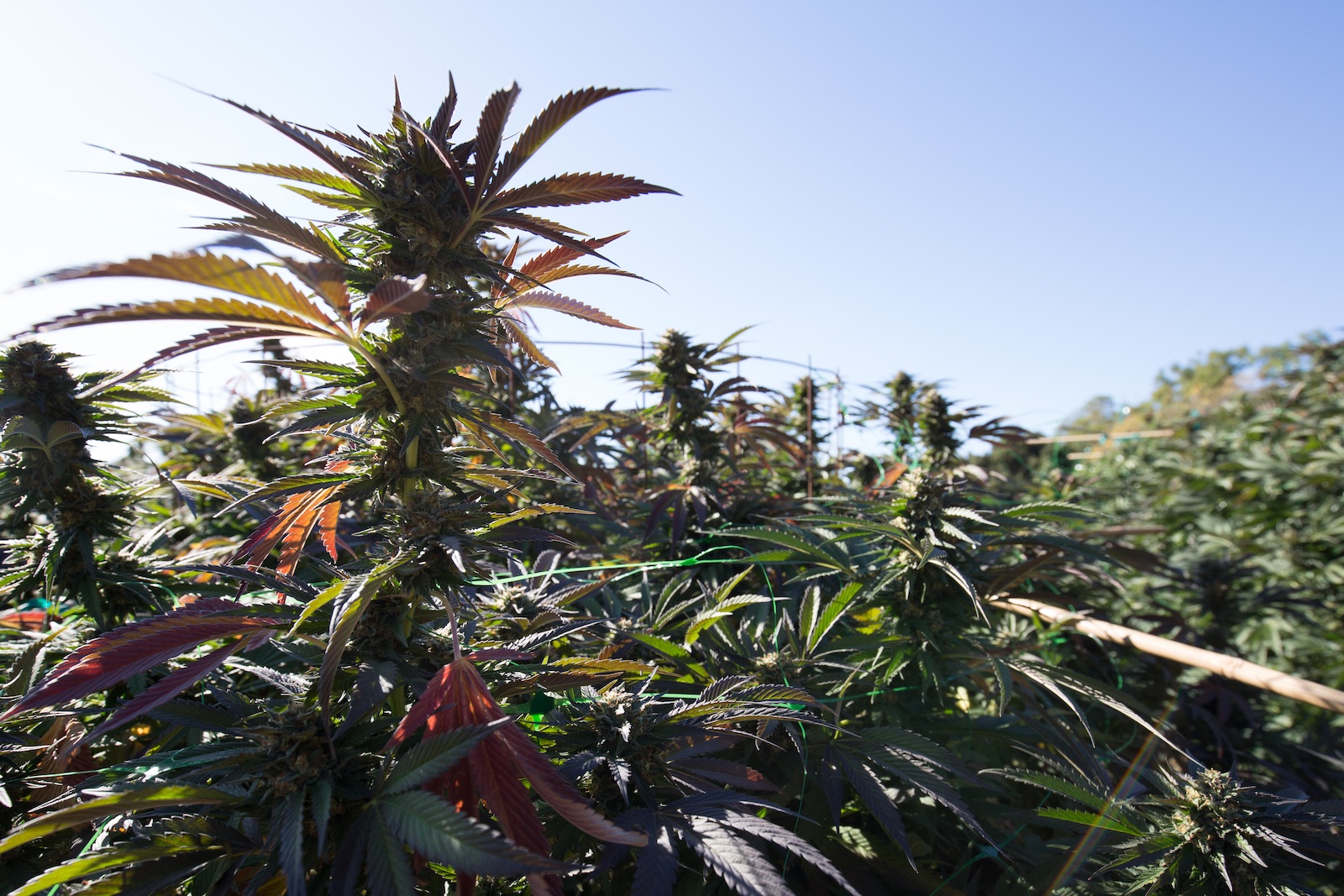- As the cannabis industry evolves, growers are constantly searching for the next big innovation. Triploid cannabis has emerged as a promising solution that has garnered significant attention.
- This genetic variant, characterised by having three sets of chromosomes instead of two, offers a range of benefits that could revolutionise cannabis growing.
- From increased disease resistance to more vigorous growth, the potential advantages are numerous and deserve detailed exploration.

You may already know triploid genetics from the bananas and grapes sold in supermarkets: large, seedless fruits that are easy to find. Triploid plants are bred to have distinctive traits (like being seedless) and offer advantages to both producers and consumers.
Now, this genetic frontier is reaching the cannabis world and has the potential to transform the growing sector. Some even claim that this development is as significant as the emergence of feminised seeds. While polyploid cannabis seeds are still relatively scarce, their availability is increasing rapidly.
What is Triploid Cannabis?
Typically, cannabis plants are diploid, meaning they have two sets of chromosomes: one inherited from the mother plant and one from the father. However, triploid plants have three sets of chromosomes, achieved through specific breeding techniques and chemical treatments. This process involves the disruption of mitosis, the process of cell division, so that a cell ends up with an extra set of chromosomes.
The creation of triploid plants is not a common natural occurrence in cannabis, although it can happen sporadically. To produce them deliberately, breeders select a high-performing diploid plant and treat it with chemicals that inhibit cell division. This treatment allows the plant cell to create additional chromosomes without dividing, resulting in a triploid plant. This method, though complex, has been adapted from techniques used in other agricultural areas since the early 20th century.
Many of the fruits we consume daily, such as seedless bananas, grapes, and watermelons, are the result of polyploidy practices. These crops have shown to be more robust and of better quality when compared to their diploid versions; and this is something that's also expected to occur with cannabis.
Benefits of Triploid Cannabis
Triploid plants are known for several significant advantages:
Greater Genetic Diversity: With three sets of chromosomes, triploid plants have greater genetic variability. This opens up new possibilities for breeding plants with desirable traits by providing a broader range of phenotypic characteristics that can include natural resistance to certain pathogens and adverse conditions.
Higher Yield and Potency: Triploid plants tend to have a larger cell size, which translates into bigger and denser flowers, as well as into an increase in the concentration of cannabinoids (such as THC) and terpenes, which are responsible for the aroma and flavour of cannabis.
Reduced Flowering Time: Studies have shown that triploid plants can have shorter flowering times, allowing growers to obtain faster harvests, which is ideal for those looking to maximise the number of grow cycles per year.
Sterile Seeds: A key feature of triploid plants is their sterility. By not producing seeds, all of the plant's energy is focused on flower development, improving the quality of the final product.
Resistance to Unwanted Pollination: As they are sterile, triploid plants cannot be pollinated by close male plants, which is an advantage in regions where cross-pollination can be a problem.

Environmental Impact and Sustainability
In addition to these advantages, a crucial aspect of adopting triploid cannabis is its potential to reduce the environmental impact of crops. As they are more resistant to pests and diseases, triploid plants require fewer pesticides and fungicides, which helps reduce the chemical load on the environment.
However, while triploid plants may be more efficient in using these resources, some studies suggest they might require more water and nutrients due to their larger size and increased vigour. Having said that, this need can be offset by their greater resistance and reduced need for chemicals, which can in turn decrease the carbon footprint of the crops.
Challenges and Considerations
Despite the numerous benefits of triploid cannabis, its cultivation presents several important challenges and considerations that must be addressed to maximise its potential:
Complexity in Production
Creating triploid plants is not a simple process. It requires advanced breeding techniques and specific chemical treatments to disrupt mitosis and add extra chromosomes. Additionally, the genetic stability of triploid plants can be an issue, as it can be challenging to maintain consistent traits across generations.
High Costs
Developing and maintaining triploid plants can be significantly more expensive than traditional cultivation methods, including not only the process of creating triploid seeds but also the additional resources needed to manage and monitor these crops.
Availability and Access
Currently, the availability of triploid cannabis seeds is very limited. Although some seed banks are beginning to offer these seeds, widespread access is not yet guaranteed. This limits the ability of many growers to adopt and experiment with this technology.
Ethical and Legal Considerations
Some groups may object to these practices based on concerns about the "naturalness" of the products and environmental welfare. Additionally, laws and regulations on the genetic modification of plants vary widely across different regions, which can complicate the adoption and commercialisation of triploid plants.
Impact on the Cannabis Industry
The introduction of triploid cannabis could revolutionise the world of marijuana, providing growers with a powerful tool to improve the quality and quantity of their crops. Just as in other agricultural industries, where polyploid crops have shown significant advantages, triploid cannabis has the potential to set new standards in the production and commercialisation of cannabis.
Besides the benefits for commercial growers, triploid cannabis has the potential to highly contribute to medical research. With greater genetic diversity and the possibility of discovering new cannabinoid and terpene profiles, researchers can explore new therapeutic applications of cannabis. The ease of cultivation and greater resistance of triploid plants also facilitate work in research settings, allowing for greater consistency and quality.
Conclusion
Triploid genetics offers cannabis growers a range of significant advantages that can lead to increased efficiency, sustainability, and quality of the final product. However, it is crucial to address the associated technical and environmental challenges to maximise its benefits. With ongoing research and development, triploid cannabis could become an integral part of the evolving cannabis industry.



Comments from our readers
There are no comments yet. Would you like to be the first?
Leave a comment!Did you like this post?
Your opinion about our seeds is very important to us and can help other users a lot (your email address won't be made public).